If you’re a small business owner in 2022, your dilemma likely comes from having too many options. With creator-focused tools being introduced every day across platforms, the task is to eliminate what you don’t need.
Running a small business means choosing which domains you can handle, considering time and resource boundaries. Creating a working social media strategy involves setting clear goals for measuring performance and focusing on goals, no matter how small.
“I’m a big fan of less is more. I would rather have a small business crush it with their email marketing and one social media channel rather than trying to be super-human and do it all (and constantly feel like you’re failing).” - Marie Forlo, Entrepreneur & Philanthropist.
Entrepreneur Marie Forleo, famously named "thought leader for the next generation" by Oprah, says that there are real upsides to social media. In the same breath, she highlights the importance of not succumbing to "comparison cycles”. What works for one business may not always work for another.
Here's an overview of the contents of this article:
- Quick Stats For Stressed Sapiens
- 10 Steps To Build A Social Media Strategy
- Choose Your Platforms Of Choice
- Create A Social Media Workflow
- FAQs (Frequently Asked Questions)
You can directly jump to a section of your choice or keep scrolling.
Quick Stats for Stressed Sapiens
- More than two-thirds of small businesses, i.e., 67%, use social media tools.
- Users spend over 1/3 of their internet time on social media usage.
- 50% of Gen Z, 44% of Millennials, and 37% of Gen X use social media daily. If you’re curious, it’s 26% of Baby Boomers.
- The top 3 social media platforms used by Gen Z, according to a study by National Research Group are Snapchat (96%), TikTok (91%), Youtube (87%), and Instagram (83%).
- Visual content has 40x more shareability on social media.
There’s a lot more to where that came from. Don’t let the statistics spook you. Having a definite vision for your brand can help build a strategy that can translate to actionables.
10 Steps To Build A Social Media Strategy
We’ve listed 10 steps you need to build a social media strategy for your brand.
- Narrow Down Your Demographic
- Define Your Brand Voice
- Choose Your Platforms Of Choice
- Create A Social Media Workflow
- Figure Out The Algorithm
- Repurpose Content
- Create A Focused Campaign
- Develop Engagement Strategies
- Network
- Evaluate And Review The Strategy
1. Narrow Down Your Demographic
Once you know the age group, income level, location, and other pertinent details of your target consumer base, analyze their purchasing behavior and to what extent social media influences it. You need to understand your demographic to figure out if you want to adopt niche marketing or need a broader marketing strategy.
That being said, remember that strategies are oftentimes like throwing a dart. You may not always hit your target, but you get better at it the more you practice. It is entirely possible for you to start with a hyperspecific market and add verticals further down the line.
At this stage, it’s good to know your competition and how consumer behavior pans out in your segment. This also involves monitoring conversations that happen and analyzing consumer sentiment.
Easylunchboxes, inspired by the Japanese Bento boxes, integrated traditional marketing strategy with their social media strategy. First off, they identified parents as the target audience of their compartmentalized lunchboxes.
Parents particularly benefit from the design because they can pack different food groups in their children’s school lunches. The brand sent free samples for people to use and post about on social media. Needless to say, Facebook did the rest of the work in generating leads for the company.
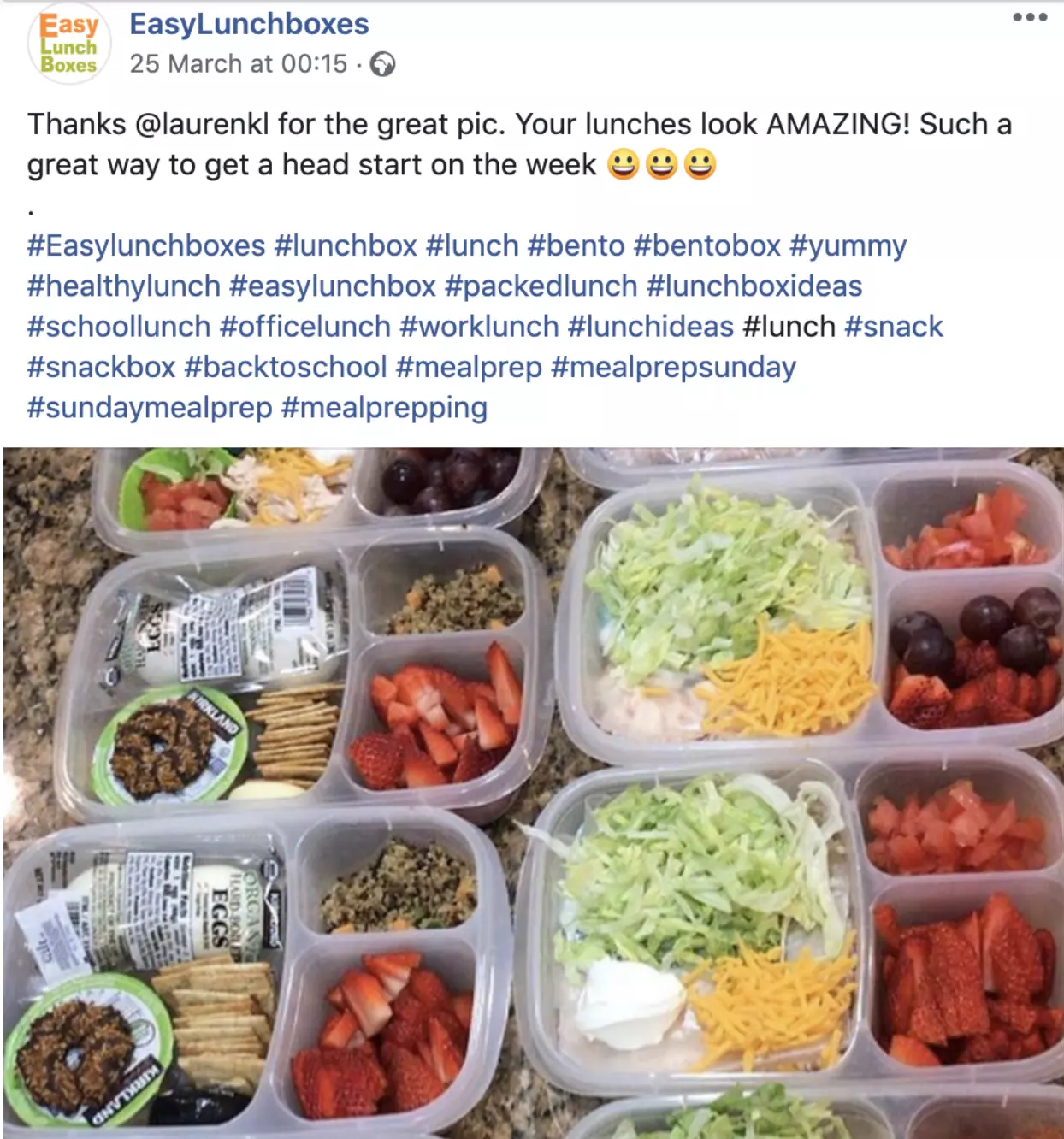
Image source: Jose Angelo Studios

Image source: EasyLunchBoxes
EasyLunchBoxes also posts light-hearted humor based on themes of parent-child interactions to maintain follower engagement and increase shareability.
The concept is not exactly revolutionary, and giving free samples is a strategy as old as time. But what matters is, integrating traditional and digital practices in approaching hyperspecific segments.
For instance, is your prospective customer’s motivation for purchase dependent on influencer marketing, cross-app promotion, promo codes, or offline integration marketing? It could very well be a combination of these.
2. Define Your Brand Voice
Brand voice is essentially your company's personality, intended to be perceived by your audience. Two brands in the same segment can have different personalities. Nike might come across as optimistic and inspiring, whereas Puma could be described as confident and brave.
Developing a unique brand voice helps customers form a degree of emotional attachment and association with your brand. This is especially true of online spaces where users interact with and tag brands to let their friends and followers know what they’re up to.
Every brand needs a narrative to be recognized and spoken about. It’s not enough if you offer users a better discount than your competitor. Consumers see lifestyle products and services as an extension of their own personalities. The key here is to build value that customers are happy to associate with.
There is a difference between voice and tone. Your brand's voice is usually consistent, but the tone of your message depends on the context of communication. Stephanie Shwab’s brand chart is a step in building a holistic social media brand voice.
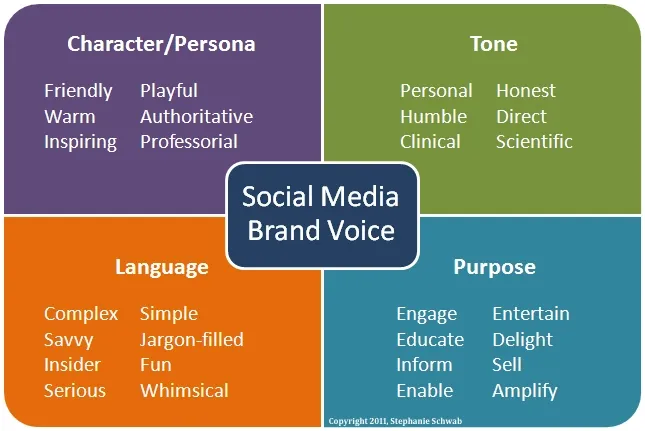
Image source: Social Media Exp
3. Choose Your Platforms Of Choice
It is easy to make the mistake of entering platforms you can’t handle if you’re focused on being everywhere all at once. The primary step to get out of the way is to analyze what your competitors are doing and where your customers are hanging out.
Statusbrew’s infographic can give you an idea of the sequence of activities you need to carry out to choose the best social media platform for your business.
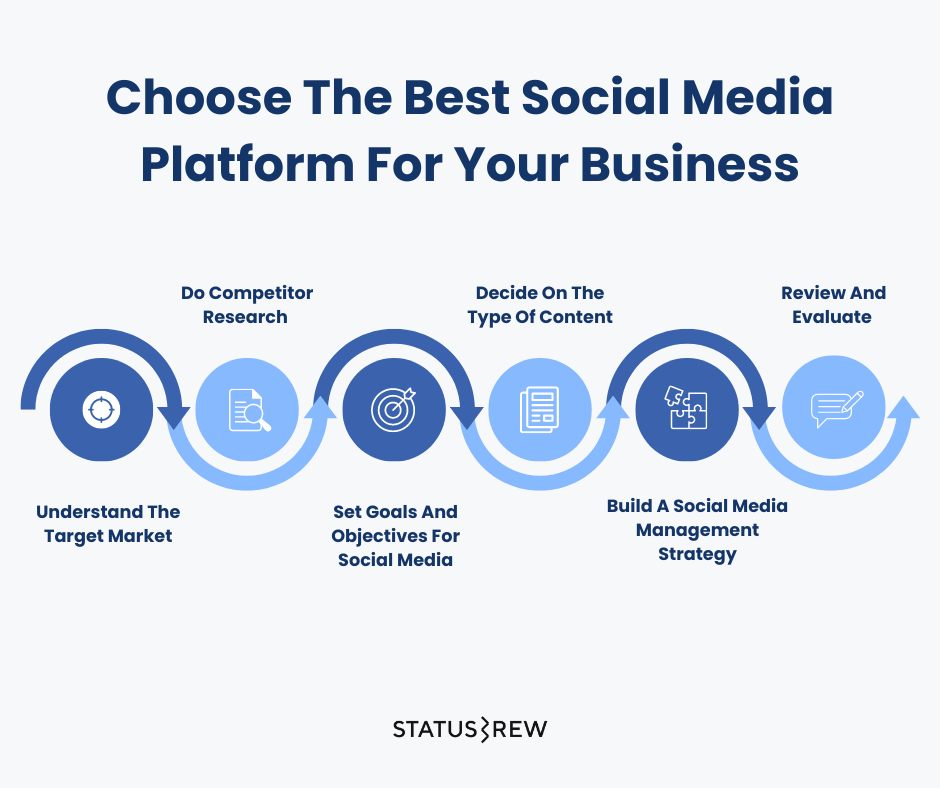
Operating in the existing marketplace of your target segment can help announce your presence in the domain. It also helps to understand what kind of content is high performing. From hereon, you can change gears and customize your content plan.
There are chances that you might find a lacuna in the value of the existing market that your brand can fulfill. The best platform for your business is one where you’ll get maximum engagement and lead generation. TikTok and Instagram, for instance, are popular with Gen Z and the Millenial audience.
LinkedIn is ideal if your B2B product/ service is dependent on creating a buzz amongst working professionals. If you’re a small business owner trying to make inroads into hyper-specific customer segments, Facebook groups are effective.
E-mail marketing helps spread brand awareness, alerts customers about unpurchased items in the cart, customer retention, and more. Event emails, new product announcements, and Welcome emails do well with users.
Here’s a fun fact from Mail Chimp:
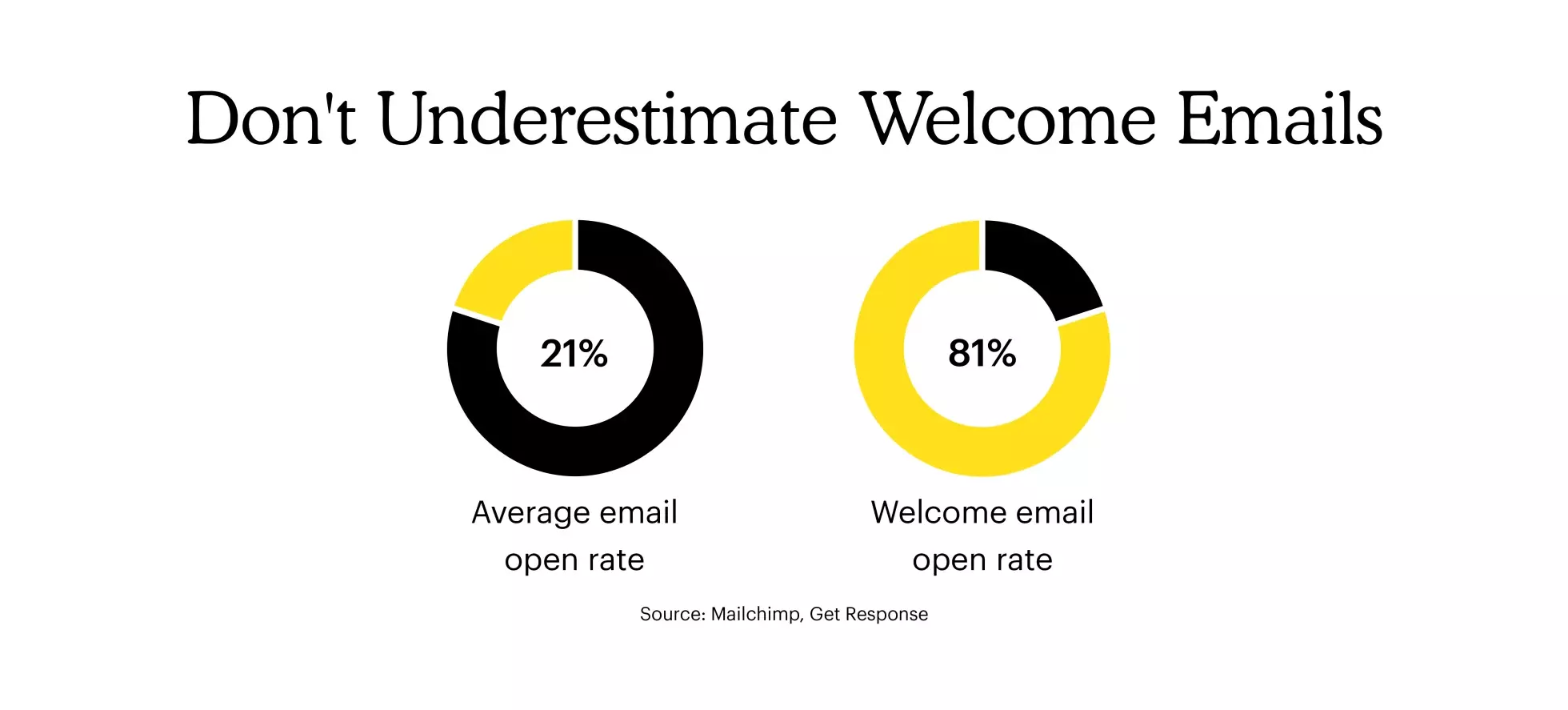
Image source: Mail Chimp
Many small business owners don’t realize that setting up an account on a specific social media platform means making that account a center for customer interaction. This is important because running a business as an individual or a small team can be overwhelming if you have too many fingers in too many pies.
You don’t want a disgruntled customer leaving a bad review because you failed to address their concern on a platform you don’t have time to engage with.
If you want to explore this, read our in-depth article on ways to choose the best social media platform for your business.
4. Create A Social Media Workflow
If you’re a small biz owner or creator, make a structure for social media usage. Otherwise, it is very easy to get sucked into more than the healthy dose of online engagement. You don’t want your business to take a backseat. Figure out if it’s just you handling social media or if you’d rather set up a team.
Customer service is typically the first department that self-employed business owners delegate to an employee. You could hire specialists or build an in-house design and content team from scratch.
Statusbrew is equipped to handle team collaborations, comment moderation, audience engagement, and more.
For starters, a content calendar is the simplest scheduling activity to undertake whether you’re an individual or you have a team managing the brand’s social media.
5. Figure Out The Algorithm
73% of marketers believe that their marketing efforts on social media platforms are “somewhat effective” or “very effective” for their business.
One of the critical factors in ensuring that you achieve engagement is understanding how the algorithms rank content on platforms. The algorithm of the application determines the placement of your content on the audience’s feed.
Many apps like Instagram, YouTube, and TikTok favor short-form content. Whereas YouTube and Spotify see a lot of takers for vlogs and long-form instructional content. Analyzing user behavior to schedule posts at the optimum time can ensure your content reaches the intended audience.
But here’s the thing. Platforms keep tweaking their algorithms. So you have to revisit your strategy, and monitor engagement.
6. Repurpose Content
Planning your social media content while keeping different platforms in mind can help you recycle the original content. For example, a podcast on Spotify can be transcribed into a blog. This way, the user gets to choose their preferred way of consuming information.
The original content can be made into infographics or posts to be shared on LinkedIn, Instagram, Facebook, Twitter, etc. With a good enough video production budget, you could create a YouTube video for the content, and promote it as reels on Instagram to gain traction across platforms.
Shoot the video, keeping in mind the difference in aspect ratio across apps. This way, the output still retains usability. This strategy also effectively ensures you’re getting the most from your investment in content.
As discussed before, different algorithms favor different content. So, posting a story on Instagram can serve as a sneak peek at a longer YouTube video. Even user-generated content such as reviews can be recycled to post as content.
7. Create A Focused Campaign
It is of paramount importance to know what your short-term and long-term goals are for the brand. Maybe you want to announce your presence in the market, drive traffic to your site, generate leads, or increase social media engagement.
Now is the stage where you define the content you want to share with your demographic on specific platforms. For example, Millenials and Gen Z could be your brand's target audience in the days running up to Halloween. Alternatively, you may choose a broader demographic around New Year’s.
Make sure you schedule posts in advance and moderate engagement, so the campaign goes to plan.No matter how small the campaign, set Key Performance Indicators across platforms to measure the effectiveness of the campaign.
Identifying metrics will help you focus on specifics and not be swayed by every number on your analytics report.
8. Develop Engagement Strategies
Now that you’ve created your campaign draft deciding how the brand will engage with customers is essential. For example, what communication channel do you want to establish if you’re hosting a product sale on your page? This has to be made clear to the user.
Some brands may not disclose the price on the post, which means that the customer has to DM (direct message) the brand’s page. This usually works on the bespoke, collectibles, or rare commodities market. Alternatively, a customer may comment on a post or message the brand with queries.
The social media manager needs to decide if there will be an automated reply, followed by the brand’s answer to the user’s question. The format and tone of the message have to reflect the brand voice.
If this task is delegated to an employee, they must be aware of the approval workflow and protocol to create content for the message.
It would be best if you also decided on what reciprocity tactics you can use to increase and retain customer engagement. Audience polls, for example, are great ways to achieve engagement and get real data about your audience. You also need to develop a crisis-handling protocol, should things go south. Preparedness is key.
Bonus Content: Social Media Automation: What It Is & Why Do You Need It
9. Network
Identifying sister brands and complementary industry brands can help you network and possibly, scale up. Before you do that, it is essential to understand what value you can provide them. LinkedIn is a key market for professionals in the B2B segment who want to generate leads by tapping into known networks.
Here's where ‘social listening’ really opens up a lot of doors. Platforms like Quora, Reddit, and LinkedIn have people from varied backgrounds looking for information, recommendations, and the like. Identifying conversations to participate in, and crafting responses can put you or your brand in the spotlight.
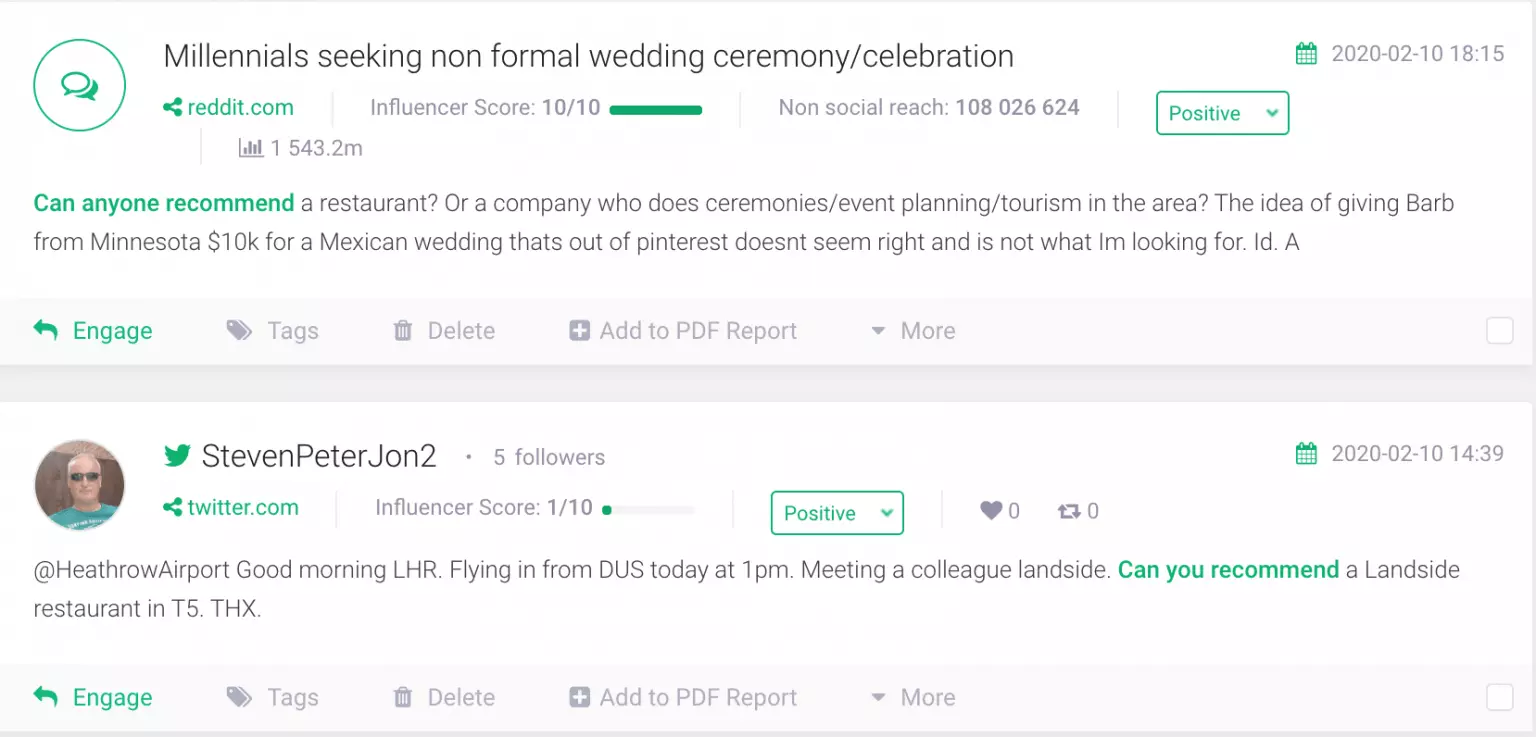
Image Source: Brand24
For instance, brands in the food and gourmet industry can profit from networking, and coming together to create content that has mutual value.
10. Evaluate And Review Strategy
After you’ve set key metrics to monitor and analyze, see how they compare with the goals you’d set for the campaign. Depending on the analysis, you might have to rework your strategy and conduct A/B testing to see what works for your brand.
Your performance is a culmination of your campaign strategy and a lot of externalities, as well. It is crucial to evaluate the metrics, all things considered. If doing all that on your own seems daunting, using a social media management platform can help.
You can customize your reports to review metrics that matter to you. You can also understand your audience engagement across your entire social media portfolio. We are, first and foremost, in the business of making data work for you.
Here’s the takeaway
Whether you’re self-employed or a small business owner with a team, streamlining your workflow is key to making sure your social media strategy is effective. You can look into automating part of the workflow, so you can focus on other key areas of marketing and business.
Everything from curating ideas, scheduling and monitoring posts to moderating comments, engaging with an audience, and reviewing strategy is better when you have an all-in-one platform to operate from. Statusbrew is designed for this and more. It just might be the right fit.
Statusbrew is an all-in-one social media management tool that supports Facebook, Instagram, Twitter, LinkedIn, YouTube, and even Google My Business.
FAQs (Frequently Asked Questions)
Can I find customers on social media?
Yes. This is one of the key objectives of creating an online brand presence. Social media offers a more effective user engagement opportunity compared to website landing pages and e-mail marketing. The leads generated from social media can be converted into sales with good customer relations practices.
What social media platforms should I be on?
Instagram and TikTok are places where you’ll find millennial and Gen Z audiences. Facebook marketing is ideal if you want to target an older demographic; LinkedIn is a great platform to target working professionals. Twitter is, overall, a great platform to get people to talk about your brand and drive traffic to your website. YouTube and Spotify are great for long-form/ in-depth content.
What should small businesses post on social media?
It helps to study your competitor’s online presence and target audience. Researching the kind of conversations relevant to your business and identifying user pain points and sentiments can help craft a strategy. You can look at content and visual references of similar brands to decide your brand language.
Should I create a separate social media page for my small business?
Creating a separate page (not a profile) for your business on Facebook, for example, ensures that you comply with the app guidelines and avoid getting your business removed. Going beyond individual apps’ terms and conditions for businesses, creating a business page on social media platforms is ideal. It helps streamline communication and provides clarity to prospective customers. Most of all, it helps curate brand identity.
How often should I post on my business page?
The numbers differ depending on who you ask, but posting 2-3x a week is considered ideal. The key is consistency and quality. Not to scare anybody, but posting too often may drive away your audience.
Can I post the same content on all my social media platforms?
For the most part, yes. Repurpose and redesign content, so it's suitable for the social media platforms that your brand is on. Redesigning content according to the app improves user experience and engagement. Let’s say you shoot a horizontal YouTube video. You would need to create another video output to make it suitable for reels as they are vertical.
Should I hire a social media manager for my business?
If your brand’s social media page also serves as a customer point of contact, it is important to respond within 24 hours (within one hour is peak customer care). Strategising and executing online content may be time consuming. You can look into hiring a social media manager if managing it yourself decreases work productivity.
Working with social media managers is advantageous owing to their expertise in online platforms. Social media management tools like Statusbrew can help you with automation and collaborate with your team to manage your brand's social media accounts.




Explore the Statusbrew range of social media tools
Cancel anytime!